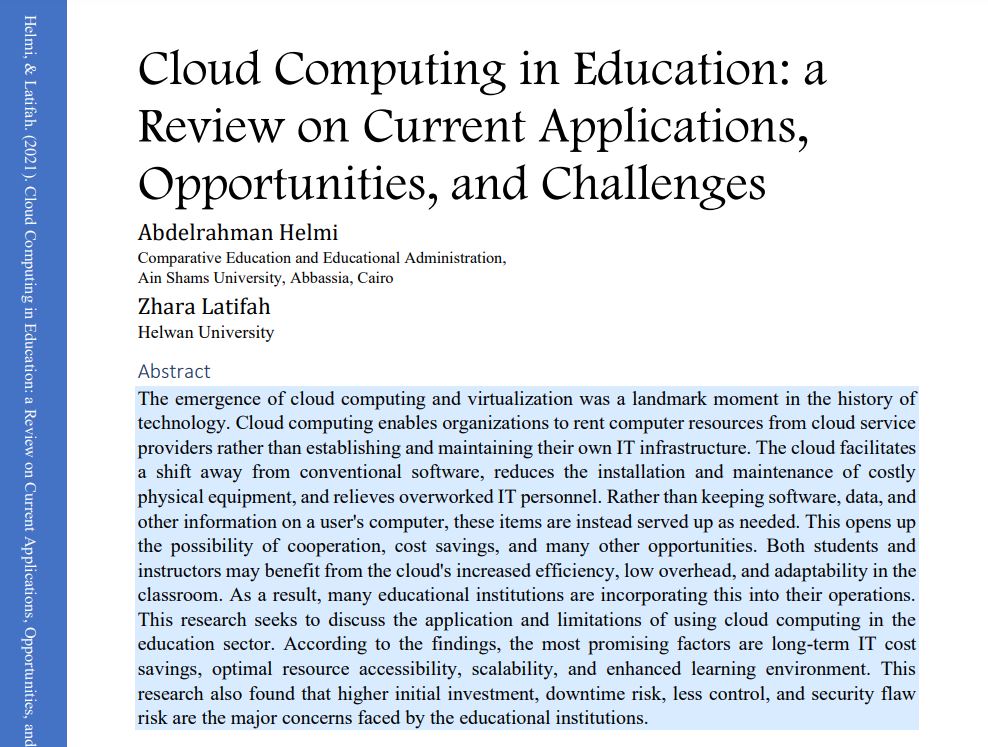Cloud Computing in Education: a Review on Current Applications, Opportunities, and Challenges
Abstract
The emergence of cloud computing and virtualization was a landmark moment in the history of technology. Cloud computing enables organizations to rent computer resources from cloud service providers rather than establishing and maintaining their own IT infrastructure. The cloud facilitates a shift away from conventional software, reduces the installation and maintenance of costly physical equipment, and relieves overworked IT personnel. Rather than keeping software, data, and other information on a user's computer, these items are instead served up as needed. This opens up the possibility of cooperation, cost savings, and many other opportunities. Both students and instructors may benefit from the cloud's increased efficiency, low overhead, and adaptability in the classroom. As a result, many educational institutions are incorporating this into their operations. This research seeks to discuss the application and limitations of using cloud computing in the education sector. According to the findings, the most promising factors are long-term IT cost savings, optimal resource accessibility, scalability, and enhanced learning environment. This research also found that higher initial investment, downtime risk, less control, and security flaw risk are the major concerns faced by the educational institutions.




